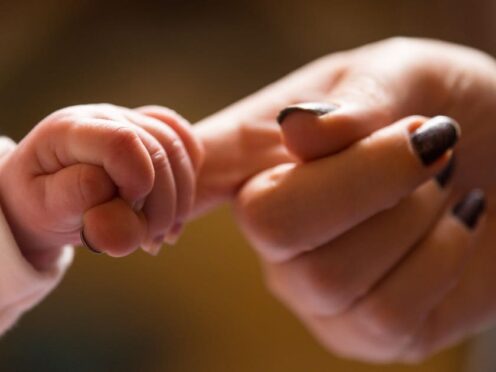
A single dose of the measles vaccine is more than twice as likely to be completely ineffective in children born by Caesarean section, according to new research.
Experts from the University of Cambridge and Fudan University in China warned that children must have both doses of the measles jab to ensure they are protected against the deadly disease.
It comes as the most recent data covering October to December last year shows just 89.1% of children in the UK have had the first dose of their measles, mumps and rubella (MMR) vaccine by the age of two.
Some 85% of children in the UK have had both doses by age five, which is below the 95% needed for herd immunity to stop the disease spreading.
Experts say lower vaccination rates have led to an outbreak of measles in the UK.
In the new study, researchers examined data for 1,505 children in Hunan, China, which included blood samples taken every few weeks from birth to the age of 12.
This allowed researchers to see how immunity to measles changes over time, including after vaccination.
The study found 12% of children born via Caesarean had no immune response to their first measles vaccination, compared to 5% of children born by vaginal delivery.
The researchers said “Caesarean section births were linked with 2.56 increased odds of primary vaccine failure” compared to babies born naturally.
However, Caesarean children who had a second dose of the measles jab had robust immunity against the disease.
The study suggests the lack of immunity in Caesarean section children is linked to the development of a baby’s gut microbiome, which is the huge array of microbes that naturally live inside the gut.
Other studies have shown that a vaginal birth transfers a greater variety of microbes from mother to baby, which can boost the immune system.
Professor Henrik Salje, from the University of Cambridge and joint senior author of the study, said: “With a C-section birth, children aren’t exposed to the mother’s microbiome in the same way as with a vaginal birth.
“We think this means they take longer to catch up in developing their gut microbiome, and with it, the ability of the immune system to be primed by vaccines against diseases including measles.
“We know that a lot of children don’t end up having their second measles jab, which is dangerous for them as individuals and for the wider population.
“Infants born by C-section are the ones we really want to be following up to make sure they get their second measles jab, because their first jab is much more likely to fail.”
Prof Salje added that “measles is top of the list of diseases we’re worried about because it’s so infectious”.
Dr Mary Ramsay, director for immunisation at the UK Health Security Agency (UKHSA), said: “The Joint Committee on Vaccination and Immunisation regularly reviews all new and available evidence relevant to all the routine vaccination programmes.
“Our evidence suggests that two doses of the vaccine are highly protective, and the majority of cases we are seeing are in unvaccinated children.”
In the UK, the first dose of the combined jab is usually given on the NHS between 12 and 13 months of age.
A second dose for full protection is given between the ages of three years and four months, and five.
Adam Finn, professor of paediatrics at the University of Bristol, said the new data was observational and could not prove cause.
But he added: “This evidence adds to previous evidence relating to other vaccines which has suggested that babies born by vaginal delivery and/or who are breast fed make stronger or more reliable immune responses.”
He said the new research “raises important questions that need to be researched further, because many children are born by Caesarean delivery these days and the rates continue to rise.
“The authors also correctly emphasise that their findings reinforce the importance of the second MMR dose.”
Latest figures for England for 2022/23 show 39% of all deliveries were by Caesarean, with 55% of deliveries in women over 40 by this method, compared to 34% in 20 to 29-year-olds.
Monthly data for January this year shows 19% of births were planned Caesareans, while a further 24% were emergency Caesareans.
The new study was published in the journal Nature Microbiology.

Enjoy the convenience of having The Sunday Post delivered as a digital ePaper straight to your smartphone, tablet or computer.
Subscribe for only £5.49 a month and enjoy all the benefits of the printed paper as a digital replica.
Subscribe